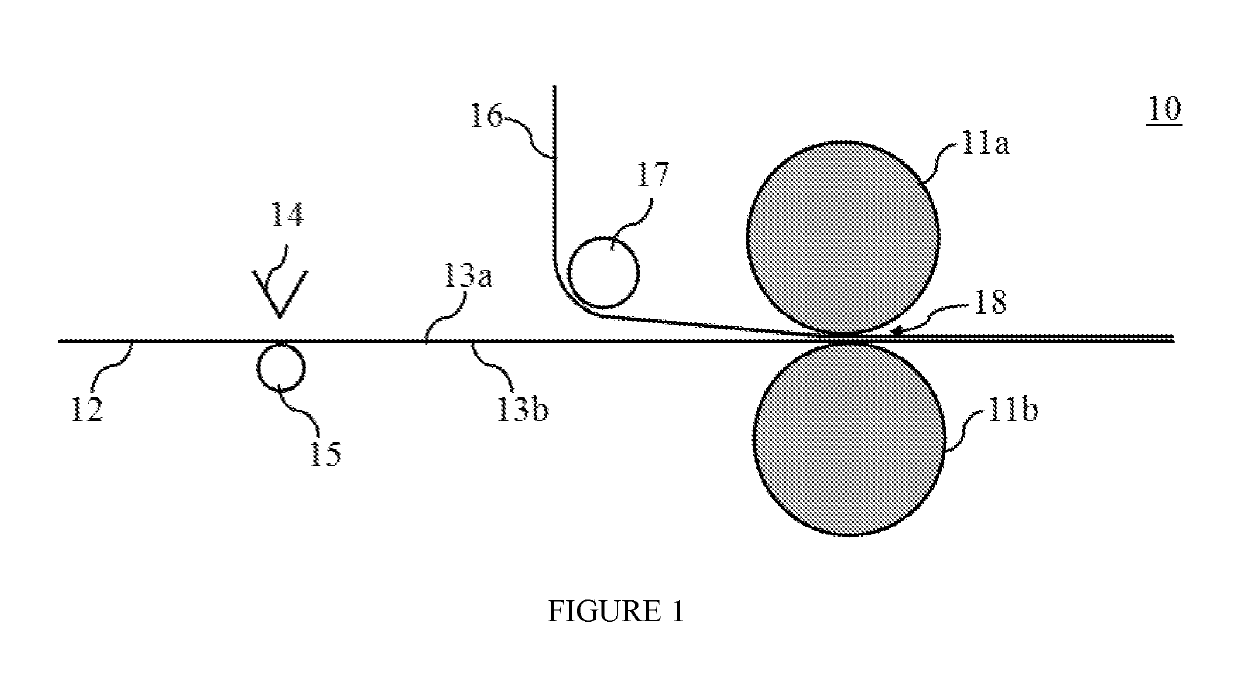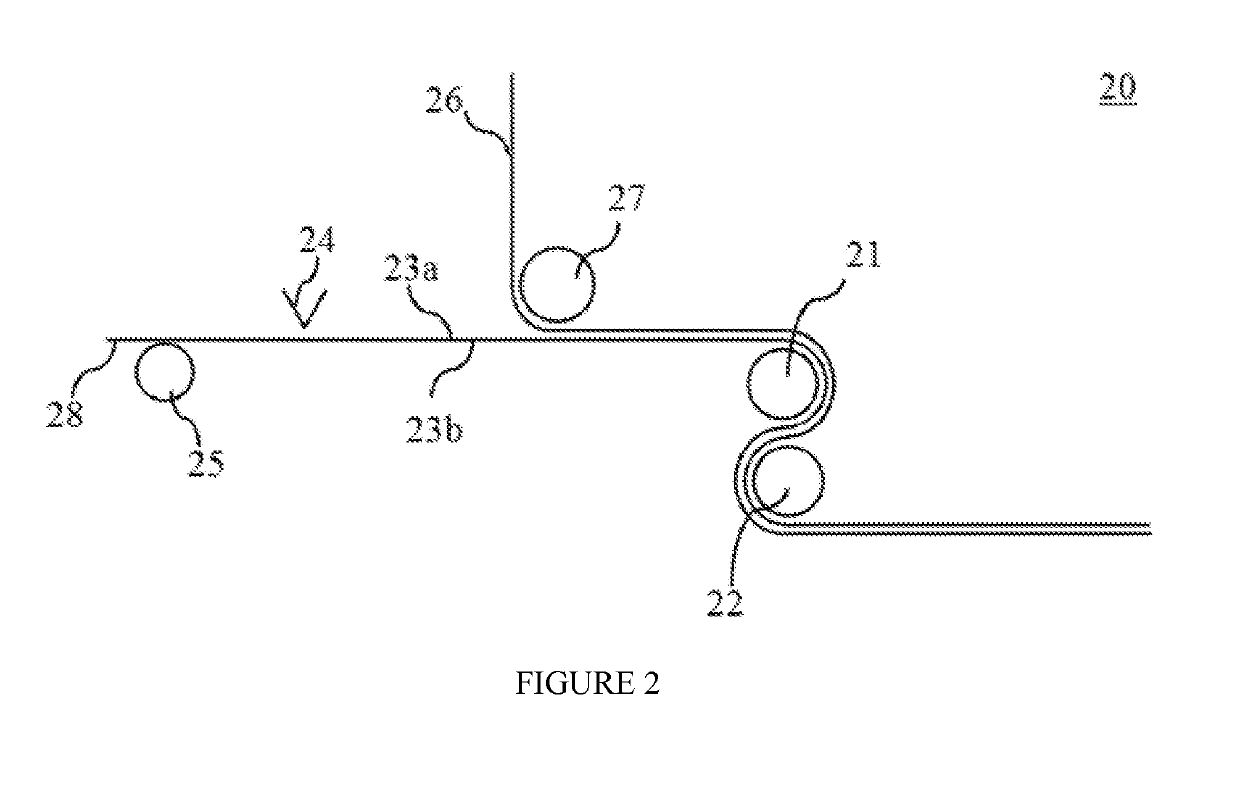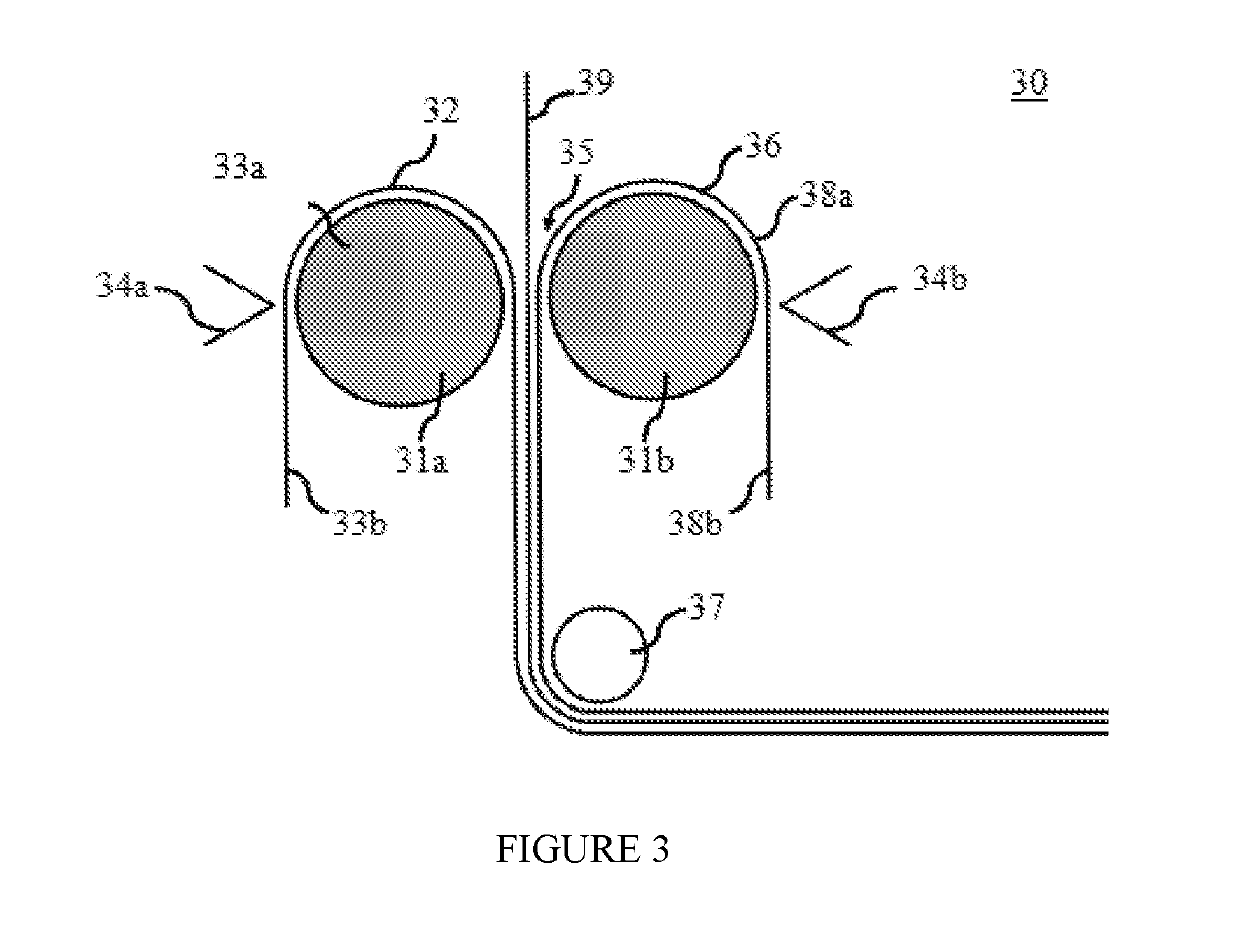Method of reducing adhesive build-up on roller surfaces
- Summary
- Abstract
- Description
- Claims
- Application Information
AI Technical Summary
Benefits of technology
Problems solved by technology
Method used
Image
Examples
examples
[0056]Molten adhesives at 149-160° C. were coated to the nonwoven substrate using a slot applicator nozzle at the add-on levels noted in Table 2. After coating the nonwoven with adhesive, the back sheet barrier film was then compressed to the nonwoven using steel nip rollers to form the final laminate. Experiments were performed at a line speed of 200 meters per minute. The nip rollers were monitored for build-up throughout the run. After one minute, the runs were stopped and the rollers closely inspected. Initial bond strengths were qualitatively determined and the spooled rolls of bilaminates were examined for signs of blocking (i.e., inter-laminate bonding resulting from bleed through of adhesive during processing). A semi-quantitative scale of was employed to gauge the level of equipment build-up with a 4.0 representing excessive build-up (full lines across the rollers as well as nonwoven fibers) and 0.0 denoting the rolls to be completely free of any contamination. Runs were pe...
PUM
| Property | Measurement | Unit |
|---|---|---|
| Temperature | aaaaa | aaaaa |
| Temperature | aaaaa | aaaaa |
| Temperature | aaaaa | aaaaa |
Abstract
Description
Claims
Application Information
 Login to View More
Login to View More - R&D
- Intellectual Property
- Life Sciences
- Materials
- Tech Scout
- Unparalleled Data Quality
- Higher Quality Content
- 60% Fewer Hallucinations
Browse by: Latest US Patents, China's latest patents, Technical Efficacy Thesaurus, Application Domain, Technology Topic, Popular Technical Reports.
© 2025 PatSnap. All rights reserved.Legal|Privacy policy|Modern Slavery Act Transparency Statement|Sitemap|About US| Contact US: help@patsnap.com



